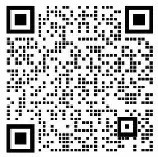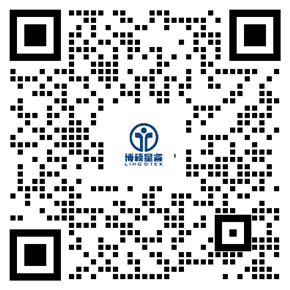传统性别角色已过时?语言如何迎接中性翻译挑战?
2024年10月20日 10:00 天津
Gender Neutrality in Asian Languages: A Linguistic Analysis
As our world evolves, social forces continue to drive change. Among these is the need for inclusivity in how we address people in terms of gender. Because everyone has their own specific gender identity, “old-fashioned” gender roles are no longer sufficient. 随着世界的演变,社会力量不断推动变革。其中,很重要的一点就是我们在性别称呼上需要更具包容性。因为每个人都有自己特定的性别认同,“传统的”性别角色已不再适用。 And in languages and translation, there is an ever-rising need for gender neutral translations. However, achieving this goal can be challenging. That’s because every language has specific grammatical gender structures. 在语言和翻译领域,对性别中立翻译的需求日益增长。然而,鉴于每种语言都有特定的语法性别结构,实现这一目标颇具挑战性。 In this article, we explore three case studies of Japanese, Korean, and Mandarin and then share our insights into creating inclusive translations. Let’s discover more! 本文将探讨日语、韩语和普通话三个案例研究,并分享我们在创造包容性翻译方面的见解。让我们来看看吧! 01 The challenges of achieving gender-neutral translations in Asian languages 亚洲语言实现性别中立翻译所面临的挑战 Achieving gender neutral translations in Asian languages is accompanied by several challenges. Below, we briefly explore three case studies, namely, gender neutral translations in Japanese, Korean, and Mandarin. 在亚洲语言中实现性别中立翻译伴随着诸多挑战。下面,我们将简要探讨三个案例研究,即日语、韩语和普通话中的性别中立翻译。
Japanese 日语
Japanese is considered one of the most complex languages together with its three writing systems. What is more, there is a distinct difference in terms of how words are spoken (with inflections reserved for men and women) and how words are written. 日语被认为是最复杂的语言之一,三种书写系统相互交织。此外,词汇的发音方式(男性与女性使用不同的语气变化)与书写方式之间存在明显差异。
Therefore, while adverts and written text may emerge as gender-neutral, spoken language such as in film or video games, requires a special touch by the translator involved. What is more with Japanese is that “what would be communicated in a gesture or inflection in other languages often has its own separate register and rules.” 因此,尽管广告与书面文本可能会呈现出性别中性的特性,但在电影或视频游戏等口语语言领域,需要译者给予特殊关注。日语的另一个特点是,“在其他语言中通过手势或者语调可以沟通的内容,在日语中有独特的语域和规则。”
This means that sentence final particles (SFPs) that tend to indicate a specific gender at the end of a sentence need careful translation to ensure that a gender is either not assigned to the speaker or spoken word or that it is assigned, depending on context. 这就意味着,需要认真翻译句尾表示特定性别的句末语气词(SFPs),以确保不将说话人或其所说之言与性别产生关联,或者根据上下文确定性别。
Korean 韩语
Although Korean does have a gender neutral pronoun in addition to “she” and “he”—”kyay”—it is broadly agreed that this pronoun is used by people of the same age or younger and is used in informal settings. 韩语中除了性别代词“she”和“he”,确实存在一个中性代词“kyay”。然而,人们普遍认为,此代词仅用于同龄或更年轻的人群,且多用于非正式的场合。
With Korean being a strong language of honorifics, the use of “kyay” is therefore not always appropriate. Moreover, with machine translation (MT) often generating gender biased results, the challenge of gender neutral translations arises in image and alt text translations (image captioning), content recommendations, and automated employment. 由于韩语中会高频使用敬语,有时候使用“kyay”并不合适。此外,机器翻译(MT)经常产出带有性别偏见的结果,因此在图像和替代文本翻译(图像字幕)、内容推荐和自动化就业等领域,出现了性别中立翻译。
This gender bias in MT can be considered challenging to overcome, because of traditionally assigned gender roles that assume, for example, that a doctor is a male or a nurse is a female. 要克服机器翻译中的性别偏见有一定难度,因为传统上赋予了一定的性别角色,比如认为医生通常是男性,护士通常是女性。
Mandarin 普通话
With Mandarin, it is important to note that the language does not have gender-neutral markings. What is more, gender is often inferred from context, titles, and names. 谈到普通话,值得注意的是,该语言没有性别中立标记。性别通常是通过上下文、头衔和名字推断出来的。
However, despite the lack of gender neutral language markings, there is a small shift towards using “Ta” and “X” to mark someone’s identity as gender neutral, especially if that is how they choose to identify themselves as. 然而,尽管缺乏性别中立的语言标记,但仍有一小部分人倾向于使用“Ta”和“X”来标记某人的性别中立身份,尤其是性别中立身份者选择以此方式指代自己时。
While this is still a phenomenon that’s minor, it is getting traction in several online communities and forums, although when it comes to gender neutral translations, the challenge can really manifest itself because of the absence of gender-neutral markers and inferences related to gender. 尽管这仍然是一个小众现象,但它在多个在线社区和论坛中有逐渐受到关注。然而,在性别中立翻译中,由于缺少性别中立标记和与性别相关的推断,挑战才真正显现出。 来。 02 What are the linguistic nuances related to gender? 性别相关的语言差异有何奥秘? There are some languages—such as Turkish—where nouns are not gendered, unlike French, German, or Spanish, and others. This linguistic distinction can make gender neutral translations much more seamless. However, with Asian languages, systems of non-gender-neutral markers, tone inflections, and honorifics, are just some of the nuances that a translator must take into account when creating a translation that is inclusive. 有些语言,如土耳其语,在名词上没有性别之分,与法语、德语或西班牙语以及其他一些语言形成对比。这种语言差异使得性别中立的翻译更加流畅。然而,在亚洲语言中,非性别中立标记、语调变化和敬语等因素都是译员在创造包容性翻译时需要仔细考虑的。
03 Insights into creating inclusive translations 如何构建包容性翻译 Despite these nuances and challenges, there are ways to create gender neutral translations that aim to be more inclusive—whether in a professional environment such as job advertisements or inj more informal settings such as video games or subtitling of films. Some examples of these methods include: 尽管存在种种差别和挑战,仍有更具包容性的方法以构建性别中立的翻译——无论专业环境如招聘广告,还是非正式场合如视频游戏或电影字幕。方法示例如下:
1. Using names or nicknames as a direct and respectful way to avoid using gender-specific pronouns 使用名字或昵称是一种直接且尊重别人的方式,可以避免使用特定性别的代词。
2. Using titles such as “Mr.”, “Ms.”, “Mrs”, “Dr.”, “Prof.” etc., also introducing a level of politeness into the conversation 使用“先生”、“女士”、“太太”、“博士”、“教授”等带有头衔的称呼,这也会让对话更礼貌。
3. Another strategy is to use the plural form “everyone” when dealing with a group of people or people of uncertain gender 在处理一群人或性别不确定的人时,使用复数形式“大家”。
4. Using “he/she” or “they”, again without specifying a specific gender
5. Addressing people by their profession or occupation, such as “student”, “teacher”, “senior”, “master”, etc.
6. Using pet names for close relationships, such as “dear”, “my love”, “baby”, etc.
7. When it comes to strangers, it’s advisable to communicate with them by addressing their identity, for example, “dear passengers” or “may I ask you?”. Conclusion 总结
使用“他/她”或“他们”,同样可以不指定具体的性别。
以专业或职业代称,如“学生”、“老师”、“长辈”、“大师”等。
在亲密关系中使用爱称,如“亲爱的”、“我的爱人”、“宝贝”等。
在与陌生人交流时,建议通过称呼他们的身份来与他们沟通,例如“亲爱的乘客”或“请问我可以问您一个问题吗?”
●●● Gender neutrality in translation can be a difficult task to achieve, particularly in some of the most prominent Asian languages. This is where translators and their computer-aided tools, including machine translation, need to work together to create gender neutral translations that create a culture of inclusivity. 在翻译中实现性别中立是一项艰巨的任务,尤其是在一些主要亚洲语言中。因此,翻译者及其辅助工具,包括机器翻译,需要协同工作以创造性别中立的译文,从而营造出包容的文化氛围。
●●● Although linguistically and grammatically speaking this may not always be possible, what is possible is to introduce a consciousness, mindfulness, and awareness of these challenges so that new solutions can be developed that do not encroach on people’s identities or make them feel unnecessarily excluded or judged. 尽管从语言和语法角度来看,这并非总是可行。但却可以引入对这些挑战的意识、察觉与关注,从而开发新的解决方案,既不会侵犯人们的身份,也不会使他们感到被无端排斥或评判。
原文链接:https://www.gala-global.org/knowledge-center/professional-development/articles/gender-neutrality-asian-languages-linguistic
封面链接:https://thelutrinae.com/wp-content/uploads/2023/02/3810859.jpg
特别说明:本文内容选自GALA官网,仅供学习交流使用,如有侵权请后台联系小编删除。
添加助教

– END –

